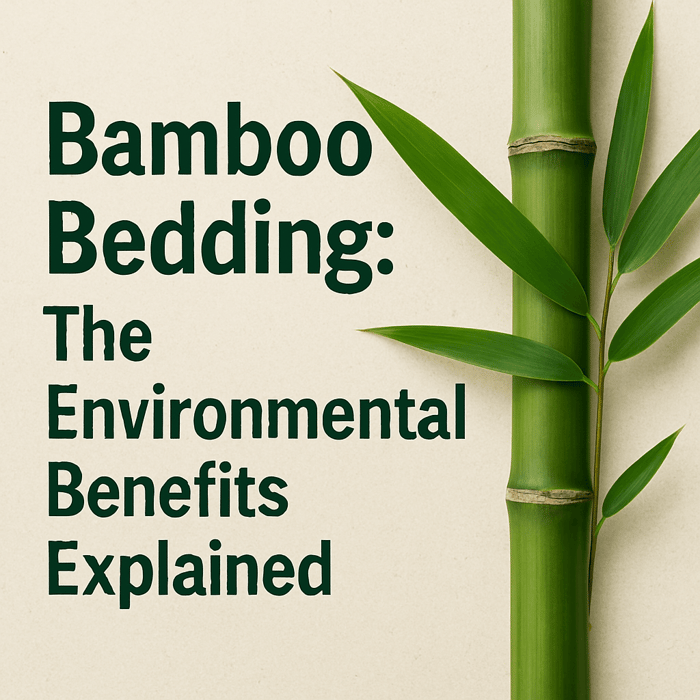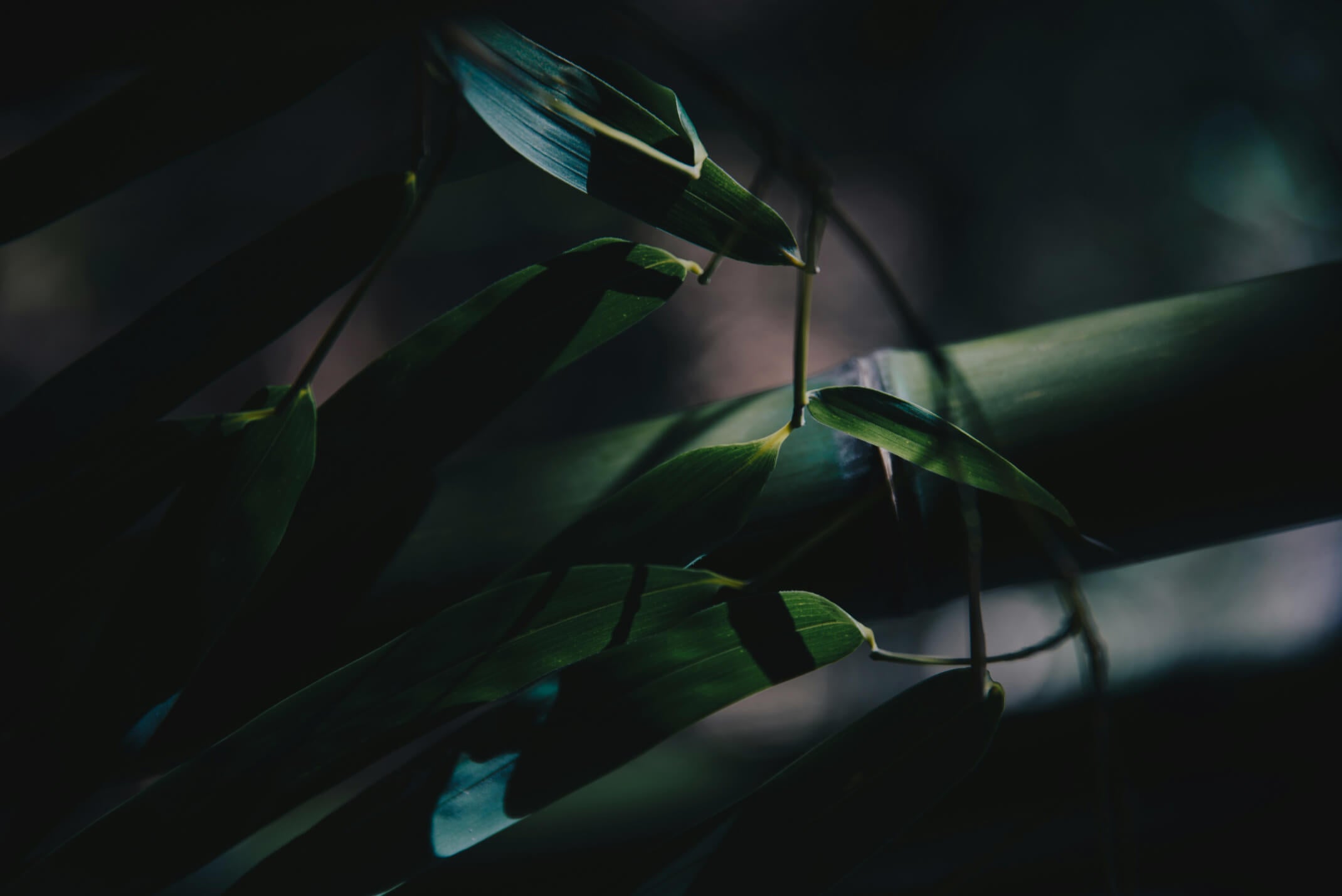Table of Contents
- 1. Water Usage: Bamboo vs Cotton
- 2. No Need for Pesticides or Fertilisers
- 3. Land Efficiency and Regeneration
- 4. Carbon Capture and Oxygen Production
- 5. Processing: The Realities of Bamboo Viscose
- 6. Comparing to Synthetic Blends
- 7. Transport Considerations
- 8. Ethical and Animal-Friendly
- Conclusion: A Smarter, More Sustainable Fibre
- References:
As awareness around sustainable living continues to grow, so does curiosity about the materials behind the products we use every day - especially in textiles. Bamboo bedding has steadily risen in popularity, often labelled as a more eco-friendly alternative to traditional fibres like cotton and synthetics. But how sustainable is it, really?
This article takes a deeper look at the environmental impact of bamboo, particularly in comparison to conventional cotton and blended synthetic fibres. While no textile is entirely impact-free, bamboo presents some genuinely compelling benefits and a few important caveats.
1. Water Usage: Bamboo vs Cotton
One of the most well-documented environmental advantages of bamboo is its low water requirement. Cotton is a notoriously thirsty crop, using as much as 10,000 litres of water to produce just 1 kilogram of fibre - equivalent to a single pair of jeans.
Bamboo, by comparison, can thrive with around a third of the water cotton needs, often relying solely on natural rainfall. It generally requires no irrigation, making it especially suitable for regions facing water scarcity. This alone makes bamboo a strong candidate for more sustainable textile sourcing, particularly in applications like bamboo bedding, where softness and environmental responsibility go hand in hand.
2. No Need for Pesticides or Fertilisers
Cotton farming accounts for a large share of global pesticide use, contributing to soil degradation, water pollution, and risks to farmworker health. Even organic cotton, while avoiding synthetic chemicals, still requires significant land and water.
Bamboo grows organically and naturally, without the need for pesticides, herbicides, or fertilisers. Its natural resistance to pests and diseases means it can flourish in the wild or in low-impact agricultural systems, helping to preserve ecosystems and reduce chemical runoff.
3. Land Efficiency and Regeneration
One of bamboo’s most impressive traits is its speed. It’s officially the world’s fastest-growing plant - with some species capable of growing up to 91 cm in a single day. It reaches maturity in just 3–5 years and, importantly, it’s self-regenerating, meaning it grows back from the same root system after harvest. This avoids the need for replanting and helps protect soil structure and biodiversity.
Compared to cotton, which must be replanted annually, bamboo offers much higher yield per acre. This means less land is needed to produce the same amount of fibre, helping to ease the pressure on forests and agricultural land – another reason bamboo bedding stands out for eco-conscious consumers.
4. Carbon Capture and Oxygen Production
Bamboo doesn’t just take less from the planet - it gives back too. It can absorb up to five times more carbon dioxide than other comparable crops, making it a powerful carbon sink. It also releases around 30% more oxygen into the atmosphere compared to most hardwood trees, contributing to cleaner air.
By planting and harvesting bamboo responsibly, it becomes an active tool in combatting climate change and restoring degraded landscapes.
5. Processing: The Realities of Bamboo Viscose
It’s important to be transparent about how bamboo becomes fabric. Most bamboo textiles on the market are made using the viscose process - where the bamboo pulp is chemically treated to create a soft, wearable fibre.
While this process can raise environmental concerns, it’s worth noting that not all bamboo viscose is created equal. Responsible manufacturers use improved techniques and invest in closed-loop systems to capture and reuse solvents, greatly minimising their impact. The result is still far less harmful than pesticide-intensive cotton farming or fossil-fuel-based synthetics, particularly when creating everyday essentials like bamboo bedding.
At Lost Loom, we work only with OEKO-TEX® Standard 100 certified suppliers, meaning our bamboo fabrics are tested and verified to be free from harmful levels of over 100 substances. This certification helps ensure safer, more sustainable production and peace of mind for those who care about what they sleep in.
6. Comparing to Synthetic Blends
Synthetic fibres like polyester, nylon, and acrylic dominate the textile industry due to their affordability and durability. But they come at a steep environmental cost.
Derived from petrochemicals, synthetics are energy-intensive to produce and contribute heavily to greenhouse gas emissions. Worse still, they shed microplastics into waterways every time they’re washed, polluting oceans and entering the food chain.
Blended fabrics - such as bamboo and polyester, or cotton and polyester - combine natural fibres with synthetics, which can significantly reduce the environmental benefits of the natural component. The presence of synthetic material not only makes these blends difficult to recycle or biodegrade but also cancels out many of the advantages you’d expect from using bamboo or cotton alone - like breathability, biodegradability, and reduced plastic waste. These fabrics often end up in landfill, where the synthetic portion can persist for centuries – something worth considering when choosing pure, biodegradable bamboo bedding instead of blends.
Bamboo, being plant-based and biodegradable, avoids these problems when used on its own. While its processing still requires careful oversight, the end product is one that naturally breaks down over time and won’t sit in landfill for generations.
7. Transport Considerations
One common concern is that bamboo is often grown and processed overseas, particularly in Asia, leading to assumptions about higher transport emissions. However, bulk container sea freight - the method most commonly used - is far more carbon-efficient per cubic metre than road freight across Europe.
In fact, shipping bamboo in large quantities by sea typically results in a lower carbon footprint than trucking cotton or synthetic fabrics from closer European sources. When managed well, bamboo’s long-distance transport doesn’t negate its environmental advantages.
8. Ethical and Animal-Friendly
Bamboo is not only better for the planet - it’s also entirely plant-based and cruelty-free. No animals are involved in the growing or harvesting process, and because it doesn’t require chemical sprays or intensive clearing, bamboo cultivation helps preserve surrounding habitats and wildlife.
When sourced from responsibly managed forests, bamboo bedding aligns well with modern values of ethical, environmentally conscious production.
Read more here on the sustainability and ethics of bamboo.
Conclusion: A Smarter, More Sustainable Fibre
Bamboo isn’t perfect - no textile is. But when we look at the full picture - from its low water usage and chemical-free cultivation to its land efficiency, carbon absorption, and biodegradable end-of-life - bamboo clearly stands out as a far more sustainable choice than conventional cotton or synthetic blends.
It’s also worth noting that none of these benefits come at the cost of quality. Bamboo bedding is luxuriously soft, breathable, and naturally temperature-regulating - which is why it’s fast becoming the material of choice for those who want to feel good, sleep well, and tread a little lighter on the planet.
For anyone seeking thoughtful, sustainable alternatives in their everyday life, bamboo bedding offers a compelling way to do better – for comfort, and for the environment.
References:
1. https://www.sciencedirect.com/science/article/pii/S2773139124000338?via%3Dihub
3. https://goodonyou.eco/bamboo-fabric-sustainable/
4. https://www.fibre2fashion.com/industry-article/7347/is-bamboo-fabric-as-eco-friendly-as-bamboo





